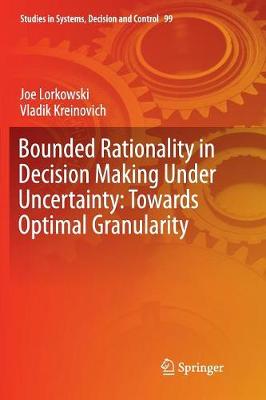Studies in Systems, Decision and Control
2 primary works
Book 15
On various examples ranging from geosciences to environmental sciences, this
book explains how to generate an adequate description of uncertainty, how to justify
semiheuristic algorithms for processing uncertainty, and how to make these algorithms
more computationally efficient. It explains in what sense the existing approach to
uncertainty as a combination of random and systematic components is only an
approximation, presents a more adequate three-component model with an additional
periodic error component, and explains how uncertainty propagation techniques can
be extended to this model. The book provides a justification for a practically efficient
heuristic technique (based on fuzzy decision-making). It explains how the computational
complexity of uncertainty processing can be reduced. The book also shows how to
take into account that in real life, the information about uncertainty is often only
partially known, and, on several practical examples, explains how to extract the missing
information about uncertainty from the available data.
Book 99
Bounded Rationality in Decision Making Under Uncertainty: Towards Optimal Granularity
by Joe Lorkowski and Vladik Kreinovich
This book addresses an intriguing question: are our decisions rational? It explains seemingly irrational human decision-making behavior by taking into account our limited ability to process information. It also shows with several examples that optimization under granularity restriction leads to observed human decision-making. Drawing on the Nobel-prize-winning studies by Kahneman and Tversky, researchers have found many examples of seemingly irrational decisions: e.g., we overestimate the probability of rare events.
Our explanation is that since human abilities to process information are limited, we operate not with the exact values of relevant quantities, but with "granules" that contain these values. We show that optimization under such granularity indeed leads to observed human behavior. In particular, for the first time, we explain the mysterious empirical dependence of betting odds on actual probabilities.
This book can be recommended to all students interested in human decision-making, to researchers whose work involves human decisions, and to practitioners who design and employ systems involving human decision-making -so that they can better utilize our ability to make decisions under uncertainty.

